We walked up Las Ramblas to Placa de Catalunya and caught a bus on the blue line (which we didn't do yesterday), to get to the Sagrada Familia. We discovered yet another unusual building which was triangular.
Sagrada Familia is the name that the Expiatory Church of La Sagrada Familia is known as
. Although it is associated so closely with Gaudi, he was not the first architect. Construction started in 1882 under Francesc de Paula del Villar but Gaudi was given the job in 1883 and continued until his death. Different architects have worked on it since then, working for a foundation that runs the project. Entrance fees and their donations are used to pay for construction. It is thought it will be completed about 2030.
The ground plan is in the shape of a Latin cross, with a length of 110m and a height inside of 45m, with 12 towers (representing the apostles) up to 115m high. The facades will show the Nativity, the Passion and Death and the Glory of God. 4 bell towers will represent the Evangelists and the 2 Domes represent Christ and the Virgin Mary.
A few months before his death Gaudi saw the pinnacle of the bell Tower on the Nativity façade finished. He said "Look at the top! Is it not true that it seems to unite Heaven and Earth? This burst of mosaics is the first thing that sailors will see when they approach Barcelona; it will be a radiant welcome
." He also said it was not regrettable that he couldn’t finish the church because others would come and renovate it and it would be even more grandiose.
The first view from the bus was amazing. We had seen it on the skyline from the boat but the closer view had huge impact. There are cranes everywhere but they do not detract from the effect. Philip and Anna were aware of extra building that had taken place since their visit a few years ago. We joined the long queue but it moved quite quickly. It also gave us a chance to look at parts of the façade. They are so intricately carved that it is impossible to get the effect on a photo without it looking cluttered. If you focus on one part then you are not aware of the overall effect. In the end we took lots of photos and hoped for the best. It also took us part the information board with the mass times - a simple reminder that it is in fact a church.
We had a brief look inside than went quickly to the elevator to go up a tower. The first queue was closed off as it was full so we switched to the other side where we had about a 15min wait. Even then there were lots of design features to look at. The elevator took us up but we had to walk down. It was well worth the trip, both for the views of the city and the closer views of the top of the church. We again were reminded how big this city is but also had a very good view of the 'torpedo’ building which looks like one in London and is evidently lovely at night when it glows with a range of colours
. We now had good close views of the tops of the towers and the fruit-like designs. The stairway down was a tight spiral which was also amazing to look down the middle.
We then had time to look more closely at the main interior. It was full of stained glass windows with various vivid colours. Gaudi’s design though has the highest windows being plain glass so they illuminate the mosaics which will be on the main vaults. It was also full of mortar dust and scaffolding from the building work. Again when we focused on parts of the building there were many intricate design features.
There were a number of displays inside. One looked at the mathematical features and geometry in nature that features in Gaudi’s work. He used conic sections, various Platonic solids, hyperbolic paraboloids and the patterns in the crystallization of minerals and the display showed where these had been used in the building. He was fascinated by spirals and used these in most of his work, including the staircase we had walked down. His gargoyles were based on the reptiles and amphibians of the Mediterranean.
The sculptor, Josep Maria Subirachs has been working on sculpture for the church in his own style for the last 20 years. He has used a cryptogram with multiple combinations of numbers that always add to 33, the age of Christ at his death
.
We went outside to look more closely at the Nativity facade. Gaudi used plaster casts of animals, plants and even his neighbours which he then enlarged and he photographed people moving in front of mirrors to study different perspectives of a figure.
While the others went to the shop I went to the display about stained glass. It talked about the limited range of tones available in glass. Gaudis vision for the windows was given and the work of Vila-Grau to realise it. The ‘Window of Light’, bearing the subscription “I am the Light” is south facing, coloured mainly in yellows, has lighter tones as it gets higher. The Window of Water is mainly blue but also the windows below it are in green, yellow and reddish brown to reflect the words, “I am the source of living water”. From the ground the words were not visible. The large windows in the chapel have warm, bright colours on the west to compensate for the lack of light and cool greens and blues on the North east.
The central windows emphasize warm colours to make the atmosphere more intimate for daily worship. The ‘Window of Poverty’ features St Francis of Assisi
John chatted to a boat designer from Arizona before we all met up and took the bus a couple of stops to a less populated area for a light lunch. We then completed the circuit on the blue route
. It took us past the main university, the Football stadium and the financial districts before we were back at Placa de Catalunya. At this stage we split up.
We walked around the Placa getting some photos that we couldn’t take from the bus. We then went to an Internet café we had spotted earlier. Anna was already there with her data stick but we just checked emails and NZ news. We then wandered around the side streets in the Gothic area. We didn’t go to into the cathedral because we wanted to just walk at this stage, although we did stop for coffee and checked out a few shops. We enjoyed the window display in one and the dummies outside a café. We even found a square being set up for a concert.
We stopped near the Columbus memorial to find a cache, then caught the transfer bus. We were back on the boat in plenty of time before departure. The Lido Room had a Spanish theme tonight so we ate there. They had very, very tender suckling pig, a paella station and the usual range of desserts. John opted out but the rest of us went to a ‘Broadway’ show, which had about 4 very good numbers and the rest made us think John made the best decision.
Getting into Gaudi
Wednesday, September 22, 2010
 Barcelona, Catalonia, Spain and Canary Islands
Barcelona, Catalonia, Spain and Canary Islands
Other Entries
-
111From Famine ships to hurling
Sep 0517 days prior Ballymacaw, Irelandphoto_camera4videocam 0comment 0
Ballymacaw, Irelandphoto_camera4videocam 0comment 0 -
112By Hook or by Crooke
Sep 0616 days prior Ballymacaw, Irelandphoto_camera14videocam 0comment 0
Ballymacaw, Irelandphoto_camera14videocam 0comment 0 -
113It's a long way...
Sep 0715 days prior Ballymacaw, Irelandphoto_camera17videocam 0comment 0
Ballymacaw, Irelandphoto_camera17videocam 0comment 0 -
114Wandering about Wexford
Sep 0814 days prior Ballymacaw, Irelandphoto_camera15videocam 0comment 0
Ballymacaw, Irelandphoto_camera15videocam 0comment 0 -
115The Rain of Kerry
Sep 0913 days prior Ballymacaw, Irelandphoto_camera5videocam 0comment 0
Ballymacaw, Irelandphoto_camera5videocam 0comment 0 -
116Nothin' much doin'
Sep 1012 days prior Ballymacaw, Irelandphoto_camera3videocam 0comment 0
Ballymacaw, Irelandphoto_camera3videocam 0comment 0 -
117A load of Blarney
Sep 1111 days prior Ballymacaw, Irelandphoto_camera15videocam 0comment 0
Ballymacaw, Irelandphoto_camera15videocam 0comment 0 -
118The products of Waterford
Sep 1210 days prior Ballymacaw, Irelandphoto_camera13videocam 0comment 0
Ballymacaw, Irelandphoto_camera13videocam 0comment 0 -
119Doin' Dublin
Sep 139 days prior Ballymacaw, Irelandphoto_camera14videocam 0comment 1
Ballymacaw, Irelandphoto_camera14videocam 0comment 1 -
120Old fossils in Kilkenny
Sep 148 days prior Ballymacaw, Irelandphoto_camera17videocam 0comment 0
Ballymacaw, Irelandphoto_camera17videocam 0comment 0 -
121Ciao Ballymacaw
Sep 157 days prior Rome, Italyphoto_camera2videocam 0comment 0
Rome, Italyphoto_camera2videocam 0comment 0 -
122Cheers Bros
Sep 166 days prior Rome, Italyphoto_camera12videocam 0comment 0
Rome, Italyphoto_camera12videocam 0comment 0 -
123Roamin' Rome
Sep 175 days prior Rome, Italyphoto_camera8videocam 0comment 0
Rome, Italyphoto_camera8videocam 0comment 0 -
124All aboard please!!
Sep 184 days prior Civitavecchia, Italyphoto_camera8videocam 0comment 0
Civitavecchia, Italyphoto_camera8videocam 0comment 0 -
125Birthday on the Med
Sep 193 days prior Livorno, Italyphoto_camera38videocam 0comment 0
Livorno, Italyphoto_camera38videocam 0comment 0 -
126A lucky break at Monte Carlo...
Sep 202 days prior Monte-Carlo, Monacophoto_camera34videocam 0comment 3
Monte-Carlo, Monacophoto_camera34videocam 0comment 3 -
127The rain in Spain...
Sep 211 day prior Barcelona, Spain and Canary Islandsphoto_camera22videocam 0comment 0
Barcelona, Spain and Canary Islandsphoto_camera22videocam 0comment 0 -
128Getting into Gaudi
Sep 22 Barcelona, Spain and Canary Islandsphoto_camera6videocam 0comment 0
Barcelona, Spain and Canary Islandsphoto_camera6videocam 0comment 0 -
129Meandering through Mallorca
Sep 231 day later Mallorca, Spain and Canary Islandsphoto_camera5videocam 0comment 0
Mallorca, Spain and Canary Islandsphoto_camera5videocam 0comment 0 -
130A lazy day at sea
Sep 242 days later Palma de Mallorca, Spain and Canary Islandsphoto_camera0videocam 0comment 0
Palma de Mallorca, Spain and Canary Islandsphoto_camera0videocam 0comment 0 -
131Out of Africa
Sep 253 days later La Goulette, Tunisiaphoto_camera9videocam 0comment 0
La Goulette, Tunisiaphoto_camera9videocam 0comment 0 -
132Lazy Sunday in Sicily
Sep 264 days later Trapani, Italyphoto_camera7videocam 0comment 0
Trapani, Italyphoto_camera7videocam 0comment 0 -
133Amazing Amalfi
Sep 275 days later Naples, Italyphoto_camera7videocam 0comment 0
Naples, Italyphoto_camera7videocam 0comment 0 -
134Rendezvous with Irene and Raewyn
Sep 286 days later Civitavecchia, Italyphoto_camera1videocam 0comment 1
Civitavecchia, Italyphoto_camera1videocam 0comment 1 -
135All at sea
Sep 297 days later Civitavecchia, Italyphoto_camera3videocam 0comment 1
Civitavecchia, Italyphoto_camera3videocam 0comment 1 -
136Hitting the Wall in Dubrovnik
Sep 308 days later Dubrovnik, Croatiaphoto_camera10videocam 0comment 1
Dubrovnik, Croatiaphoto_camera10videocam 0comment 1 -
137Checking out Corfu
Oct 019 days later Corfu Town, Greecephoto_camera6videocam 0comment 0
Corfu Town, Greecephoto_camera6videocam 0comment 0 -
138Lord of the Rings
Oct 0210 days later Katákolon, Greecephoto_camera5videocam 0comment 1
Katákolon, Greecephoto_camera5videocam 0comment 1 -
139Stunning Santorini
Oct 0311 days later Santorini, Greecephoto_camera10videocam 0comment 2
Santorini, Greecephoto_camera10videocam 0comment 2 -
140Effusing over Ephusus
Oct 0412 days later Kusadasi, Turkeyphoto_camera6videocam 0comment 0
Kusadasi, Turkeyphoto_camera6videocam 0comment 0 -
141Striking out in Athens
Oct 0513 days later Athens, Greecephoto_camera5videocam 0comment 0
Athens, Greecephoto_camera5videocam 0comment 0 -
142Loungin' about
Oct 0614 days later Messina, Italyphoto_camera5videocam 0comment 3
Messina, Italyphoto_camera5videocam 0comment 3 -
143Walking on the Moon
Oct 0715 days later Messina, Italyphoto_camera6videocam 0comment 2
Messina, Italyphoto_camera6videocam 0comment 2 -
144Ciao Noordam, Bonjourno Roma
Oct 0816 days later Rome, Italyphoto_camera5videocam 0comment 0
Rome, Italyphoto_camera5videocam 0comment 0 -
145The Pope's place
Oct 0917 days later Rome, Italyphoto_camera8videocam 0comment 0
Rome, Italyphoto_camera8videocam 0comment 0 -
146Ciao Roma
Oct 1018 days later London, United Kingdomphoto_camera3videocam 0comment 0
London, United Kingdomphoto_camera3videocam 0comment 0

 Barcelona, Catalonia, Spain and Canary Islands
Barcelona, Catalonia, Spain and Canary Islands
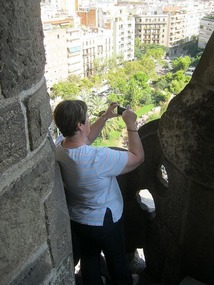
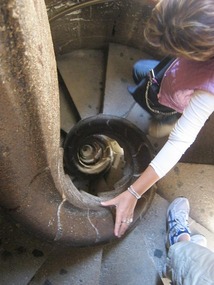
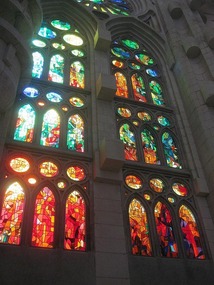
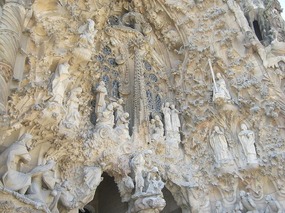









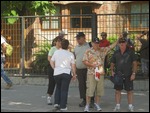
2025-05-22